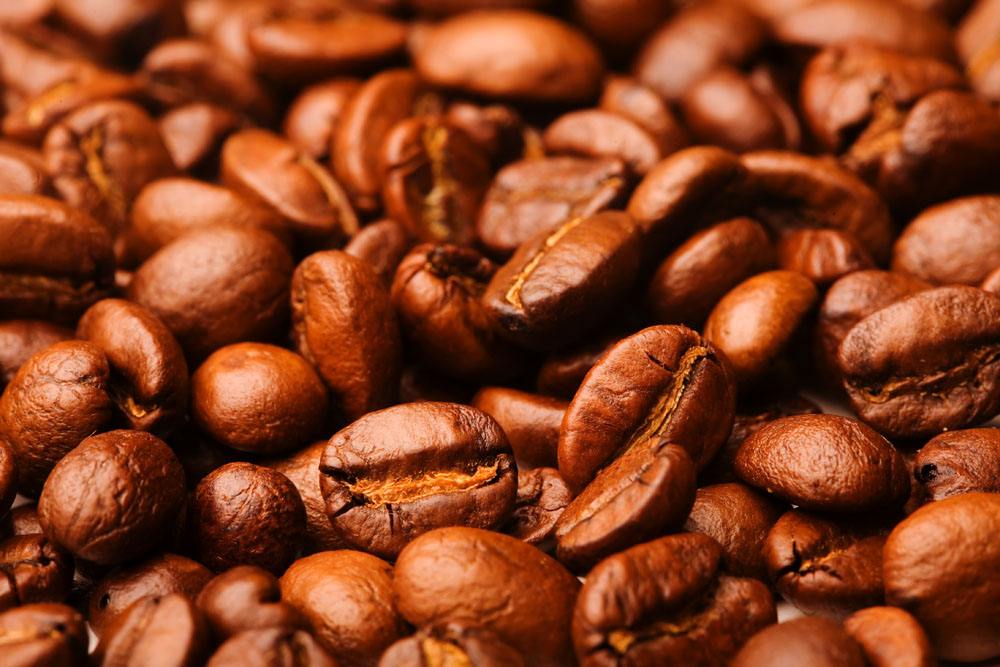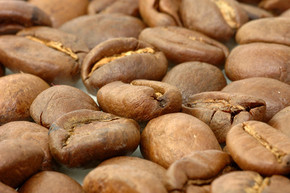What are the Arabica coffee beans?
Pay attention to coffee reviews (Weixin Official Accounts vdailycom ) and find a beautiful cafe to open your own shop
Genetically classifying coffee has always been a complicated business. As far as the coffee varieties on the market are concerned, the most superficial classification is of course divided into Arabica and Robusta (hereinafter referred to as radish beans)! About the difference between arabica and radish beans. Today we're going to focus on the lineage of the Arabica family.
Two great families.
Tiepica
"Typica" iron pickup, the name sounds very powerful, but in fact it is not so strong... its constitution is weak, disease resistance is poor, easy to catch rust leaf disease, fruit yield is also small. It is one of Ethiopia's oldest native varieties, and many Arabica are derived from iron pickups!
Iron pickup top leaves for bronze is one of the characteristics, bean larger, into a sharp oval or thin pointed shape. We are familiar with, such as thunder, such as Mantenin, Blue Mountain, Elephant Bean, Kona, Yunnan Small Round Bean... and so on. They are all derivatives of iron pickups.
「Bourbon」
bourbon
Bourbon is an ancient fine variety juxtaposed with iron pickup, and some botanists believe that Bourbon is a variant of early iron pickup transplanted to Yemen.
Bourbon is almost entirely round beans, a little smaller than iron pickup, ripening later, but yielding 30% more than iron pickup. It is suitable for growing at altitudes above 1200 meters, and the flavor is obviously more prominent than that below 1000 meters. However, Bourbon has a disadvantage that it ends up resting for a year. Round bourbon is vigorous, resistant to rust leaf disease is better than iron pickup, but the flavor is not inferior to it, or even better.
In 1810, Bourbon Island's round beans were partially mutated into pointed beans. This is the famous "pointed bourbon". Its characteristics are that the caffeine content is only half, the output is small, and the constitution is weak. It is extremely rare, just like a weak aristocratic youth.
In addition, the biggest common point between iron pickup truck and bourbon is that they both need shade tree protection. If there is no shade tree to help them block the sun, not only is it not conducive to their growth, but the flavor of coffee beans produced is also greatly reduced.

gene mutant
Bourbon variants
Kenya
"SL28""SL24" is the French and British missionaries and researchers in the early 20th century screening, breeding in Kenya, the Bourbon descendant, for a hundred years it has adapted to Kenya's high concentration of phosphoric acid soil, breeding Kenya beans have a special acid aroma, different from Central and South America Bourbon beans. However, after its transplantation to Asia, it went out of flavor and could not show their characteristics.
yellow bourbon
Bourbon Amarello Yellow Bourbon is a yellow-skinned bourbon variety endemic to the Brazilian state of Sao Paulo, which generally turns red when the coffee fruit ripens, but yellow bourbon does not turn red when it ripens and is orange in color. Huang Bourbon has become a popular fried chicken in the fine coffee industry because he almost won the top three awards in the "Cup of Excellence"(Chinese name: Extraordinary Cup).
kaddura
Caturra, a single-gene variant of bourbon discovered in Brazil in the 1950s, has better yield and disease resistance than bourbon. The tree is shorter and easier to harvest. Unfortunately, it encounters the same problems as bourbon--the result is a year off, and the flavor is comparable to bourbon beans or slightly worse.
But it is more adaptable, can be planted in high density, does not need shade trees, direct exposure in the sun can also be vibrant, so he also has a name-"sun coffee"(Sun Coffee).
Kadura is suitable for low altitudes of 700 meters to high altitudes of 1700 meters, but the higher the altitude, the better the flavor and the lower the soybean yield. There are also varieties of yellow cadura in Central and South America, but they are not as popular as yellow bourbon.
Pakas
In 1935, Salvadoran coffee farmer Don Alberto Pacas selected a high-yield San Raymond bourbon variety and planted it on his farm. In 1956, his coffee tree produced more fruit than the same type of coffee tree. Professor Dr. William Cogwill of the University of Florida identified this bourbon as a genetic mutation and named it "Pacas."
Paccas are high in yield and quality and are popular in Central America, where 68 per cent of the current population is bourbon, compared with 29 per cent for Paccas.
Variants of the Iron Pickup family
Elephant bean
Maragogype was discovered in 1870 in the "Maragogype" region of Bahia in northeastern Brazil, and was named because the bean was at least three times larger than the average Arabica, making it the largest in the world. It is the most famous variant of iron pickup, the giant baby of iron pickup family.
Elephant beans are very suitable for 700 meters-800 meters of low altitude areas, but the flavor can be lacking fragrance Chen, no characteristics, even earthy smell. Therefore, it is advisable to select areas above 1000 meters above sea level, with better flavor, mild sour taste and pleasant sweet fragrance.
Kona
Although Kona is planted at an altitude of several hundred meters, it comes from Kona on the Big Island of Hawaii. With a mild sea breeze and fertile volcanic soil, it has an extremely clean sour fragrance and sweet taste. Compared to Blue Mountain, which is higher in altitude, it is simply even higher.
blue Mountain
"Blue Mountain" is popular all over the world, and Blue Mountain, which is hard to find, comes from the iron pickup family. Why is Blue Mountain hot and expensive? This was partly because it was mostly contracted out to the imperial army, and partly because it was not acclimatized and in poor condition once it left Jamaica. After 200 years of domestication, Blue Mountain evolved successfully in Jamaica, and its resistance to fruit rot was better than that of ordinary iron pickups. Where can Blue Mountain be tamed next? We can look forward to it.
A hybrid of two families.
new world
"Mundo novo" Bourbon and iron pickup truck fornication! The two families had illegitimate children! It was first discovered in Brazil and has high yields and strong disease resistance. The fly in the ointment is that it is up to 3 meters high and is not easy to harvest. Because of the good quality of the cup, it is known as the new hope of the Brazilian coffee industry, so it is named New World.
kaduai
"Catuai" Kaduai is a hybrid of the New World and Kadura, which can be described as a mixed second generation. It inherited the advantages of Kadura's low trunk and made up for the weakness of Arabica fruit. The result is solid and not easy to fall in case of strong wind. The biggest regret is that its overall flavor is slightly more monotonous than Cadura.
Kaduai also has red fruit, yellow fruit difference, red fruit than yellow fruit is more often awarded. Carduai, Cardura, New World and Bourbon are the four main coffee varieties in Brazil.
Pakamala
Pacamara is the crystallization of the iron-pica variant of the elephant bean and the bourbon variant of the pacas, and is also a hybrid, the size of the bean is second only to the elephant bean. In 2007, he won the "CoE" double championship in Guatemala and Honduras, and even arranged the top three awards in El Salvador. He is the rising star of El Salvador.
Bastard children with radishes
Timo
East Timor Timo has a low acidity and lacks character. It is often used in Taiwan to make low-cost formula beans. Alas, on the importance of genes…
However, East Timor also has washed high-altitude purebred iron bika. Before buying, be sure to find out whether it is a hybrid or a purebred iron bika washed bean. The quality of the two is far different. The former is plain and the latter is amazing.
Katimo
In 1959, the Portugal moved the Bourbon variety Kadura to East Timor and mixed it with Timo with radish bean lineage to breed a hybrid second generation Katimo with strong disease resistance and production ability.
Although Katimo inherited the advantages of turnip beans, he also inherited the genes for poor flavor. In recent years botanists around the world have turned to cross-breeding Arabica and Katimodo bands in an attempt to reduce the radish bean lineage in order to improve the bad reputation of the poor Katimodo Cup test.
Icato
"Icatu" In the past, Arabusta, a blend of Arabica and radish beans, increased yield and disease resistance, but coffee flavor has always been poor. Scientists then used Arabusta to crossbreed with Arabica varieties such as Kadura, New World and Bourbon for many generations, gradually reducing the bad taste of radish beans and improving the aroma of Arabica beans, thus giving birth to a multi-generation hybrid excellent variety-Icato.
In addition, Arabica-radish hybrids, such as Ruiru 11 and Chandragiri, generally inherit the strong disease resistance of radish beans, but weaken the flavor of Arabica. For coffee lovers, whether these hybrids can have satisfactory performance remains to be further cultivated and tested!
Important Notice :
前街咖啡 FrontStreet Coffee has moved to new addredd:
FrontStreet Coffee Address: 315,Donghua East Road,GuangZhou
Tel:020 38364473
- Prev

Introduction to the taste and flavor of the historical and cultural cultivation of coffee in Bali, Indonesia
Follow the caf é (official Wechat account vdailycom) and find that Beautiful Cafe opens a small shop of its own [country]: Indonesia [production area]: Kintamani volcano area [altitude]: 1400 m [harvest season]: June to September every year [treatment]: sun [variety]: USDA, Karka, Smai 795 [treatment plant]: Ubu treatment plant
- Next

How about Arabica coffee?
Following Cafe (Wechat official account vdailycom) found that Arabica can become the aristocrat of coffee beans, the most precious variety and enjoy the highest honor, depending on the high standards of its growing environment. Arabica coffee is generally thought to be native to the Ethiopian plateau and is widely distributed in the tropics.
Related
- Detailed explanation of Jadeite planting Land in Panamanian Jadeite Manor introduction to the grading system of Jadeite competitive bidding, Red bid, Green bid and Rose Summer
- Story of Coffee planting in Brenka region of Costa Rica Stonehenge Manor anaerobic heavy honey treatment of flavor mouth
- What's on the barrel of Blue Mountain Coffee beans?
- Can American coffee also pull flowers? How to use hot American style to pull out a good-looking pattern?
- Can you make a cold extract with coffee beans? What is the right proportion for cold-extracted coffee formula?
- Indonesian PWN Gold Mandrine Coffee Origin Features Flavor How to Chong? Mandolin coffee is American.
- A brief introduction to the flavor characteristics of Brazilian yellow bourbon coffee beans
- What is the effect of different water quality on the flavor of cold-extracted coffee? What kind of water is best for brewing coffee?
- Why do you think of Rose Summer whenever you mention Panamanian coffee?
- Introduction to the characteristics of authentic blue mountain coffee bean producing areas? What is the CIB Coffee Authority in Jamaica?

